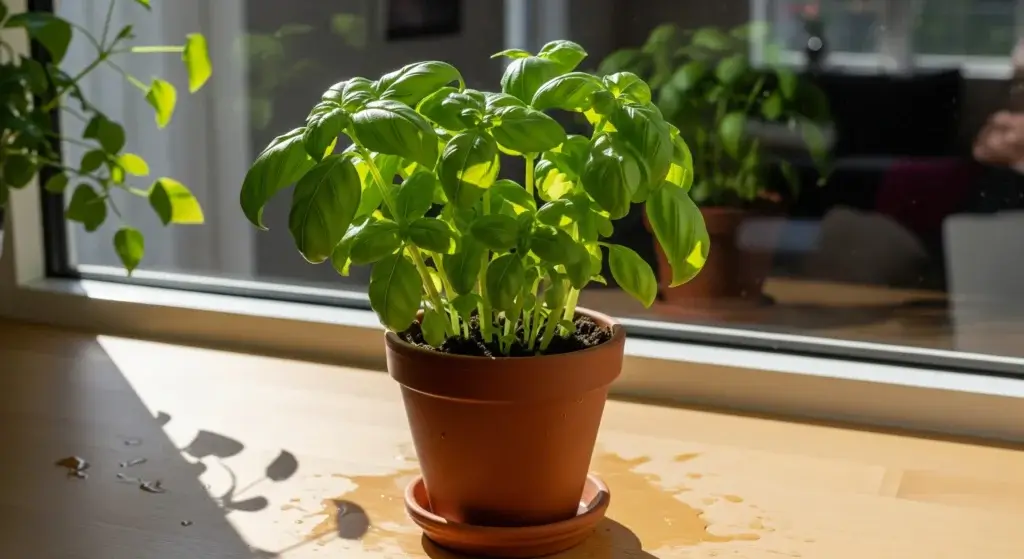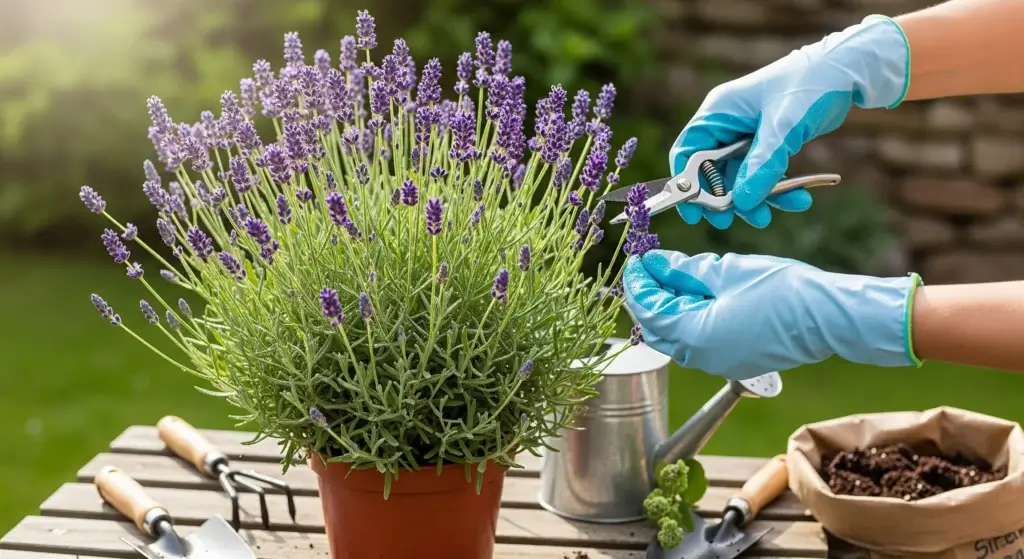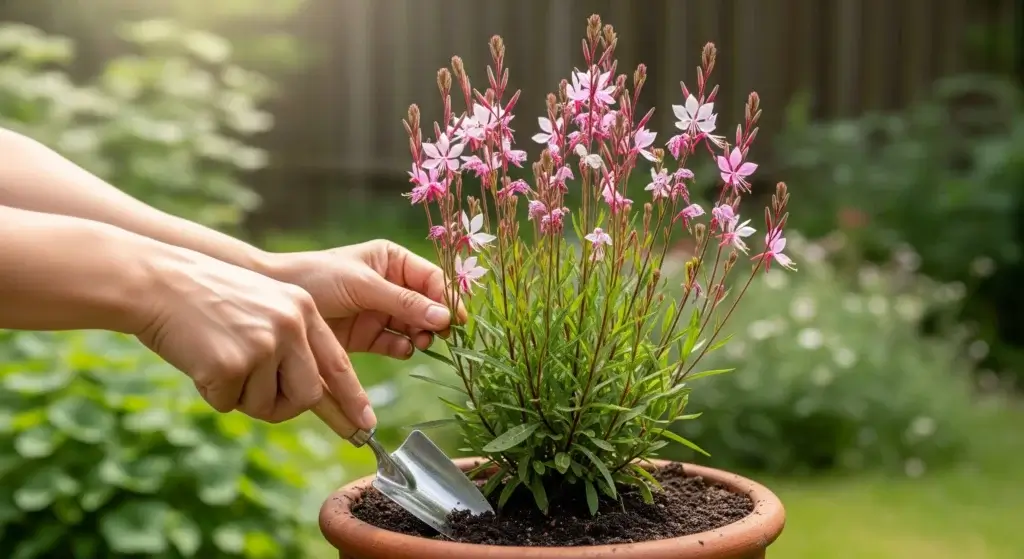Indoor basil has become a whole trend, especially for people stuck in apartments or cold places where plants usually tap out early. But here’s the plot twist: most folks accidentally doom their basil in a couple of weeks because they don’t actually know what it needs. Once you dial in its favorite conditions, though, basil becomes that loyal friend who shows up with fresh leaves for your pasta, salads, and yes—your legendary pesto. This guide breaks down everything you need to keep your basil thriving and drama-free so you can harvest nonstop like a pro.

Choosing the Right Basil Variety for Indoor Growing
Indoor basil isn’t a one-size-fits-all situation — some types handle apartment life better than others. Sweet basil is the classic “I go with everything” option, but compact types like Spicy Globe or Greek basil are basically the introverts of the basil world: small, chill, and perfect for tight spaces.
If you’re dreaming of nonstop pesto, Genovese basil’s big, flavorful leaves are your best friend. Want something with a little drama? Purple varieties like Dark Opal or Red Rubin look like they’re about to headline a fantasy novel and taste amazing too. Thai basil and lemon basil also slap if you’re into bold flavors or cook a lot of Asian-inspired dishes.
Before you pick a plant, check your space. Tiny windowsill? Go for the mini varieties. Got a bigger setup? Standard basil can stretch up to two feet like it’s trying to touch the sun. The right match makes indoor gardening way less chaotic — and way more delicious.
Providing Optimal Lighting Conditions
Basil is basically that friend who needs the spotlight 24/7. Indoors, it wants six to eight hours of direct sunlight, not just a cute bright room. A south-facing window is prime real estate. East or west can work too, but your basil might grow like it’s half-asleep.
If your place is kinda dungeon-vibes or it’s winter, no stress — grow lights are a total cheat code. LED grow lights don’t burn your plants or your electricity bill, and keeping them about six to twelve inches above the leaves for twelve to sixteen hours a day gives basil what it needs to thrive. Think of it as giving your plant its own personal sun.
When basil doesn’t get enough light, it starts stretching out like it’s trying to escape the pot, gets tiny leaves, and turns pale — the plant equivalent of saying “help.” Move it somewhere brighter or hit it with artificial light. Basil may be dramatic, but once you understand its vibe, it rewards you with absolute flavor magic.
Selecting the Perfect Container and Soil
Basil loves attention, but it absolutely refuses to live in swampy conditions. Pick a pot that’s at least six to eight inches wide and must have drainage holes — no exceptions. Terra cotta pots are extra clutch because they breathe, but anything with drainage works. Just don’t trap your basil in a soggy prison unless you want instant regret.
For soil, skip the garden dirt. It’s too heavy and usually comes with mystery bugs you did not sign up for. Basil loves a light, fluffy potting mix that drains well and is nutritious. A store-bought herb or veggie mix is perfect, or you can do it yourself with peat or coco coir, perlite, and compost. It’s like giving your basil a soft, premium mattress versus a lumpy futon.
You can toss some pebbles at the bottom for extra drainage if you’re feeling fancy, but it’s not a must. Definitely use a saucer to catch water — just don’t let your basil sit in it like a kid soaking in a bathtub. Happy roots = happy basil = endless tasty leaves.
Mastering the Watering Technique
Watering basil is like trying to text someone you like without overthinking it — easy to mess up if you go too hard or too little. Basil wants its soil moist, not swampy and definitely not bone-dry.
Honestly, just stick your finger in the dirt about an inch deep. If it’s like the Sahara down there, well, it’s time to get out the watering can. Basil’s usually thirsty every couple of days, sometimes three if your place isn’t a sauna, but really, there’s no one-size-fits-all rule. Tiny pot? That dries out faster than a gossip rumor. Hot, stuffy room? Forget it, soil’s parched in no time.
When you do water, go slow and steady till you see water sneaking out the bottom. That’s when you know the roots are finally getting in on the action. Try not to give the leaves a shower, though—wet basil leaves plus a warm room equals fungus party, and trust me, basil hates that drama. Morning’s the best time, so if you accidentally splash the leaves, they’ll dry off before fungus starts making itself at home.
If your basil’s flopping over like it just ran a marathon, even though the dirt’s damp, pump the brakes—you’re probably drowning it. Yeah, plants can totally drown. It’s all about that sweet spot. Once you figure out the rhythm, your basil will honestly look like it’s living its best life.
Maintaining Ideal Temperature and Humidity
Basil is a total warm-weather diva. It wants daytime temps around 65–75°F and absolutely refuses to deal with cold drafts, AC blasts, or winter windows that feel like Antarctica. If it gets too cold, it’ll drop leaves like it’s quitting on life.
Humidity matters too, especially in winter when indoor air gets dry enough to mummify your plants. Basil prefers 40–60% humidity, so if your place is giving “Sahara,” set up a small humidifier, cluster your plants together, or use a pebble tray with water under (not touching!) the pot.
Crispy edges, brown tips, or sluggish growth are basil’s way of saying, “Hey, I’m thirsty… in the air.” Skip misting, though — that just creates fungus drama. Keep basil warm and comfortably humid, and it’ll thrive like it’s living its best tropical life.
Fertilizing for Maximum Growth and Flavor
Basil’s a total diva when it comes to nutrients-especially indoors. You keep watering, and bam, all of the good stuff just flushes right out. If you want it to stay lush-and actually taste like something-you gotta feed it every couple weeks. Not a full-on buffet, but more like a snack-just half the usual dose of a balanced water-soluble fertilizer. Basil isn’t bulking up for a bodybuilding competition, for goodness’ sake.
Now, if you’re feeling fancy, try things like fish emulsion, kelp, or compost tea. That’s basically plant fine dining with a side of bonus minerals. Regular synthetic fertilizers? Totally fine too. Just grab a balanced one—something with numbers like 10-10-10 or 20-20-20. Basil’s a big fan of nitrogen since you’re always pinching off leaves, but don’t skip out on the rest of the nutrients, or you’ll end up with a sad, floppy plant.
Go easy, though. Over-fertilizing makes basil grow big but taste bland, and it can leave salty crusts on the soil like your plant just did the cinnamon challenge. Brown tips or stunted growth are red flags. If it happens, flush the soil with water to wash the extra salts away. Feed smart, and your basil will hit its peak flavor era.
Pruning and Harvesting Techniques
Basil isn’t out here pruning itself into some Instagram-worthy shrub. Nah, you gotta jump in and play stylist—think of it like giving your plant a fresh fade. When it’s about six to eight inches tall, that’s your cue. Snip from the top, always just above those baby leaves poking out. That little chop? It’s basically you whispering, “Hey, branch out!” and boom, suddenly you’ve got double the leaves.
Don’t go wild, though. Seriously—never hack off more than a third at once. If you do, your basil’s gonna freak, like it just bombed an exam. Oh, and if you catch it trying to flower? Nip those buds off fast. The second basil starts blooming, all it wants to do is make seeds, and the flavor tanks. Your pesto will thank you.
Even when you don’t need basil for cooking, give it a weekly pinch-back to keep it bushy and happy. Morning harvests are peak flavor time — not too hot, not too damp. Use clean scissors so you’re giving clean cuts, not ripping your plant like a toddler opening a snack bag. Basil thrives when you prune with confidence.
Troubleshooting Common Problems
Basil likes to act dramatic when something’s wrong, but the signs are pretty easy to read once you know the vibe. Yellow bottom leaves? You’re either drowning it or not feeding it enough. Brown, crispy edges? That’s basil begging for more water or humidity. Pale, stretchy growth means it’s hunting for light like it’s in a horror movie. And if it suddenly wilts even though the soil is wet, that’s root rot — the plant equivalent of “I can’t do this anymore.”
Pests indoors? Oh, you bet. They love a cozy basil setup as much as anyone. Peek under those leaves and you might spot some clingy roommates—aphids, whiteflies, spider mites, whatever’s trendy this week. Knock ‘em off with a good spray of water, go after them with some insecticidal soap, or, if you’re in the mood for chaos, unleash ladybugs. Seriously, tiny warriors.
Fungus is another drama queen, especially if your space is all muggy and cramped. Give your basil some elbow room, maybe stick a mini fan nearby. Try not to get the leaves all wet when you water—basil hates a sloppy shower. If you see weird powdery stuff or sad, droopy leaves, just yank ‘em off. Good air and chill watering habits keep your basil happy, and honestly, it’s less of a mess.
Conclusion
Growing basil indoors is totally doable — treat it like a chill but needy roommate: give it 6–8 hours of bright light, evenly moist (not soggy) soil, warm temps, regular light feeding, and weekly pinches to keep it bushy. It won’t live forever (think months to a year), so restart from seeds or cuttings every few months instead of nursing a tired plant. Do that and your windowsill will smell like pesto heaven — fresh leaves on demand, zero sad grocery-store basil.



